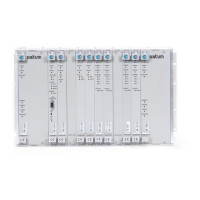12713020-003-2 Revision F.01 – January 2007 SSU-2000 Technical Reference 25
Chapter 2 TL1 Reference
TL1 Command and Response Conventions
TL1 Command and Response Conventions
This section describes general and specific conventions for expressing TL1
command and response parameters for the four types of operations application
messages:
Input Command Message – This message determines the action that the
SSU-2000 will take. For a detailed description of input command messages and
conventions, see Input Command Message Conventions, on page 26.
In-Process Acknowledgment – The in-process acknowledgment (IP) response
message is sent in response to a command that the SSU-2000 is unable to
respond to within two seconds. For a detailed description of in-process
acknowledgment response messages and conventions, see In-Process
Acknowledgment Response Message Conventions, on page 27.
Output response message – The output response message indicates whether
the command was complied with (COMPLD) or denied (DENY). For a detailed
description of output response messages and conventions, see Output
Response Message Conventions, on page 28.
Autonomous response or report message – The autonomous response or
report message is an output generated by the SSU-200 due to an event, such as
an alarm, or a change in status in the system. For a detailed description of
autonomous response or report messages and conventions, see Autonomous
Report Conventions, on page 30.
TL1 General Conventions
TL1 uses English-like acronyms and shorthand or abbreviations in a format that can
be read and composed by humans.
Follow these general conventions for entering all TL1 parameters:
Enter all command characters in upper-case. In the command syntax, lower-case
characters indicate parameters that you must supply.
All commands must contain the cmd, tid, and ctag fields.
You may omit trailing commas in the parameters field.
Terminate command lines with a terminating semicolon (;) and an end-of-line
designator (
<cr><lf> or <cr lf>). The SSU-2000 executes the command when
it receives the terminating semicolon in the command entry.
^ is a blank that must appear in a command or response
: is a block separator character
:: indicates a null field for a block
Note: The automatic time-out is disabled for the port when you
are communicating in TL1 mode using one of the serial
communications ports or the Ethernet port.

